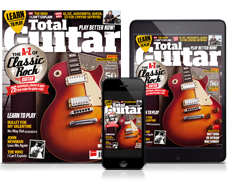Greg Mackintosh talks Paradise Lost's The Plague Within
Guitarist speaks in-depth about gear and creating original tones for new album
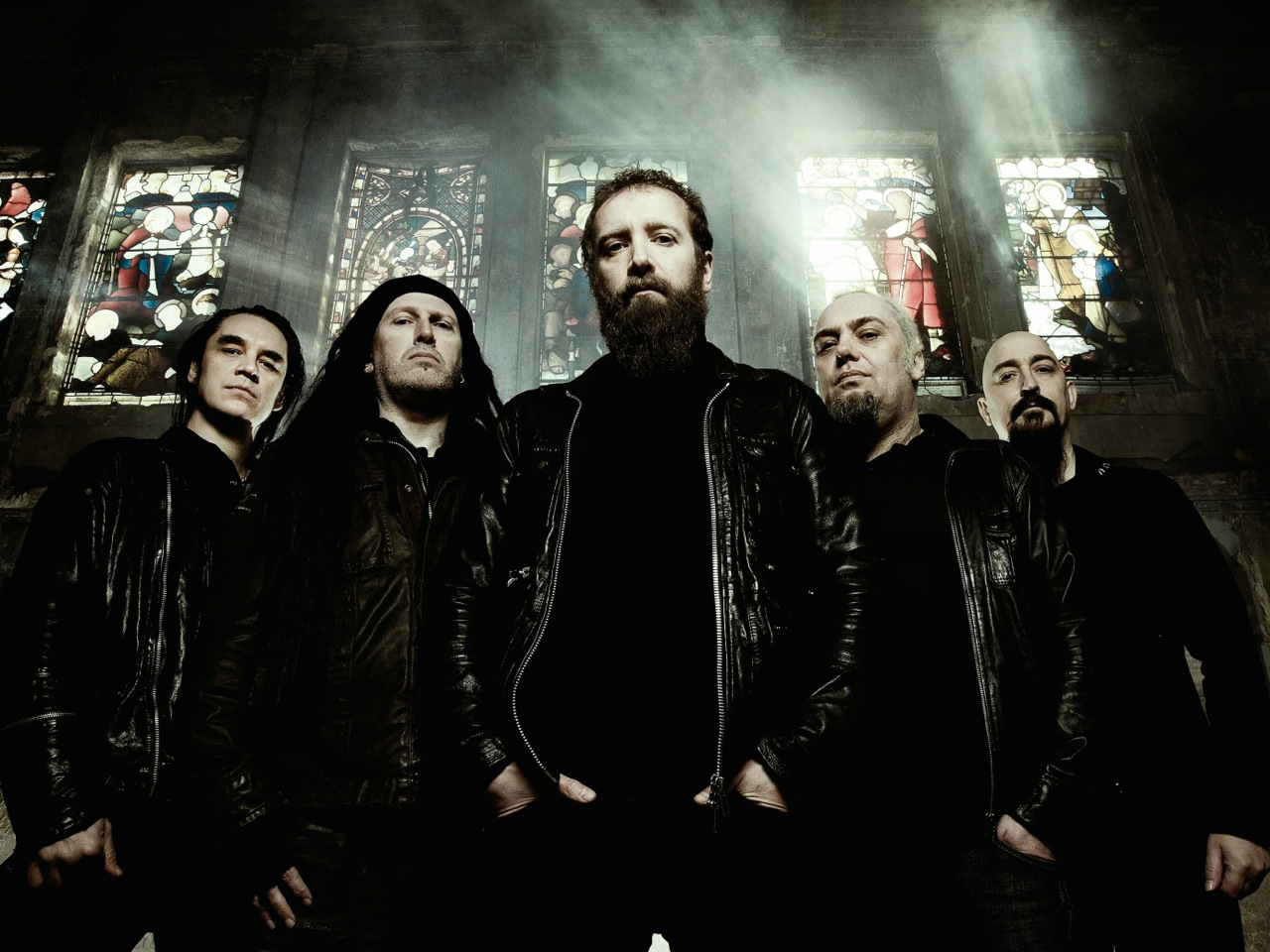
Greg Mackintosh talks Paradise Lost's The Plague Within
The darkness is ever present in Paradise Lost's sound, regardless of the ever-evolving shape they've moulded it into over the years. But on new album The Plague Within, the Yorkshire metallers haven't sounded quite this heavy in a long time. And by that we mean the blackened death and doom metal elements of their early days 27 years ago, poured neat into an earthy mix that actually makes perfect sense in the contemporary sound of one of the UK's finest heavy bands.
"As it came together, the death metal elements became more prevalent."
“The idea for the record, when we were first starting to talk about what we wanted to do, was let's not worry about it going in one direct or another,” explains guitarist and co-songwriter Greg Mackintosh. “Let's take every element and put it into a record, and if that includes the earliest elements or elements from ten years ago or whatever, we weren't shying away from any period. But it also had to be cohesive.”
"As it came together, the death metal elements became more prevalent," Greg adds, "they came to the forefront so the album ended up with more of those elements than we'd first anticipated."
Read on as Greg talks in-depth about his quest for a unique guitar sound for the band's 14th opus, and the new songwriting and guitar recording process that fuelled the gothic metal pioneer's creativity.
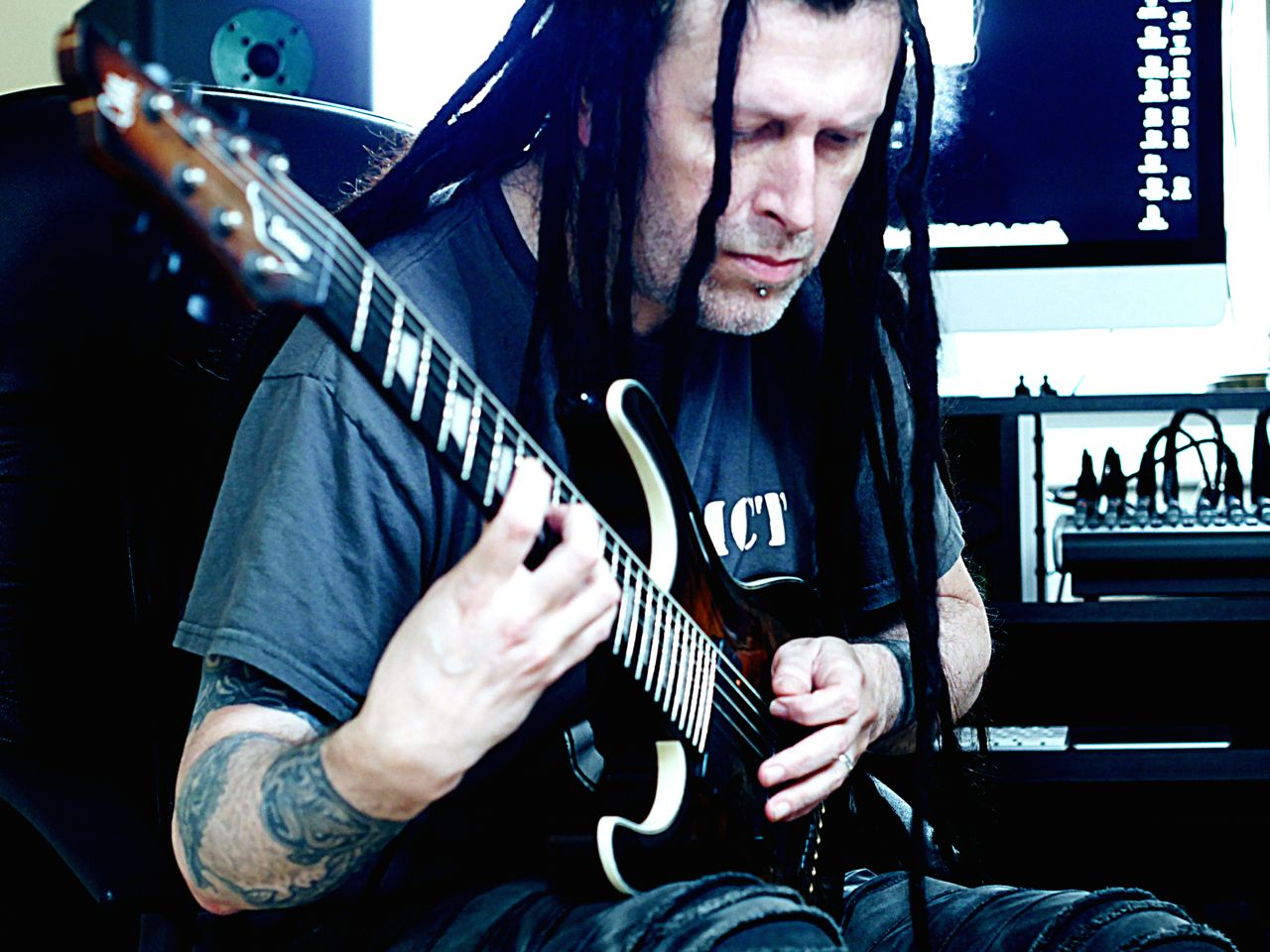
Roots bloody roots
Do you feel that your work in a more extreme style with your other band Vallenfyre and Nick's [Holmes, vocals] with Bloodbath has fed back into Paradise Lost on this album?
"Our whole thing when Paradise Lost started with death metal in '88 was that we didn't do the typical death metal things guitar-wise anyway. It was blending various guitar styles together with death metal vocals."
Greg Mackintosh: “Yes, I guess it wasn't intentional at first but it did pave the way a little I suppose. Our intention was to keep those elements completely separate from Paradise Lost. But we've both been having fun with these different things as well so we thought it might be interesting to incorporate some of that kind of stuff back. Because Paradise Lost started out in that vein a long time ago and maybe we shouldn't shy away from those elements sometimes. I think indirectly it gave us the courage to go back down that avenue.”
It's certainly reflective in Nick's vocals, but there's a lot of variety there too…
“He does four or five – maybe more – different styles of vocal on the new album. Going from very soft vocals through various types, from what people used to call his Hetfieldisms, to the death metal sort of style. There's kind of a broad range of vocal stuff on there and we tried to do that musicality as well.”
“Musically, it does hit certain areas where it's as heavy or heavier than anything we've ever done before. And a track like Flesh From Bone is probably the fastest song we've done tempo-wise and Beneath Broken Earth is quite possibly the slowest song we've ever done. The whole point is to mix it up on this record.”
How do you feel The Plague Within fits in the lineage of the last few Paradise Lost albums?
“The last two we've done have been very strong albums, and what people would probably call typical Paradise Lost. But with this one we wanted to change tack a little and touch upon elements that maybe we hadn't looked at for a long time, draw some of those in and do something a little off the wall. Something not expected, maybe.
"We'll see how it goes, because sometimes it's nice to do albums that are expected in a way, but for a career like ours it's important to do certain records and songs where you try something else. It's got some quite strange things on there that people might not expect, even some black metal elements. Something we've never really touched on before.”
How did that manifest on the guitar side of things?
“I'd say there's two or three tracks where it's a lot more riffy, and I guess you could say death metal. But our whole thing when Paradise Lost started with death metal in '88 was that we didn't do the typical death metal things guitar-wise anyway. It was blending various guitar styles together with death metal vocals. And it is kind of like that.
"There's sludgy songs, there's even some discordant black metal stuff, there's even some harmony guitar on there. And just some classic kind of rock on there, in a way, that we blended together.”
You mentioned more harmony parts and blending with Aaron on this record, and that can definitely be heard on a song like Terminal. That sounds like a development of your dynamic with this record…
“I think we both have our fortes as guitarists. His is kind of the choppier rhythmic stuff and mine is the more feel-based stuff with leads. But a lot of the riffs for this record written blend it together more and make it more of a fluid thing so that's why we matched the guitars.
"We do different parts of each song on this record, it's not like he's just doing rhythm and I'm doing the harmonies and leads. We took it section by section on the song and decided which part our style would suit best. It was an interesting way of working that we hadn't actually done before. It's usually Aaron does the rhythms and I do the other bits. It was more constructive in a way.”
Your signature lead sound sometimes involves a couple of wahs set in different positions, did you keep that setup for this one?
“I still do that from time to time, and on this record on some parts. I love the [Ibanez] Weeping Demon, just because you can have it really subtle. You can set it as an EQ, change the depth… it's very easy to quickly get the sound you want without changing lots of things on the EQ of the amp. It's quick to pick out the sweet spots of what you play. I've been a big fan of that for the last five years or so.”

Tones
Jaime Gomez Arellano produced, and he's worked with Ghost in the past, but how did you end up working together?
"We deliberately went down a different route where we want it to sound like no one else in metal at the moment."
“It was actually quite a while ago, he was a mastering engineer before he went into production. My wife used to be in a band in America called Tapping The Vein, on Nuclear Blast, who were kind of classic rock-meets-electronica, and they needed a mastering engineer. I'd heard about this guy so I contacted him for them. And that was the first time I'd ever spoken to him, and then I heard he's gone into production and he'd done the Ghost thing. I spoke to the Cathedral guys and he did the last couple of things for them. And I just liked the way he worked.
“When we first came into this record, initially we just had him down as an engineer and using his studio [Orgone Studios, London]. But he had so many good ideas using various classic pieces of equipment and using pedal chains and equipment chains that it's only fair that he comes in as a producer. And we worked as a team in the studio so it worked out really well.”
On your previous album, Tragic Idol, you said you were trying to capture the sound of playing in the room more; stripping things back and getting the guitar sound right for tracking from the very beginning. How did this compare?
“This was a bit more experimental I would say. We were trying out lots of different amps and cabs, different ways of doing things. A lot of vintage gear as well, just because Jaime had it so why not try it. Also, recording the rhythm guitars on this record I got Jaime to use, not a trick because a lot of people do it, but it was a method we used on the [second] Vallenfyre record that we'd recorded in Salem a year before. It's setting up two completely guitar stack systems and running them through together as one guitar sound.
"We had one sludgy, retro sound, like an old Sabbathy sound going into an old Marshall and then into an Orange cab with an old BOSS Hyperfuzz and the Vox V810 [now-discontinued Valvetone overdrive pedal] on it. Then we had a [Peavey] 5150 set up, and I've been getting pedals from a guy… have you heard of Nine Of Swords?
I was going to ask you about that because I saw a studio picture [shown above] with three Nine Of Swords pedals on the Paradise Lost Facebook page…
“Yes, some of them are very extreme and only good for certain parts when you're trying to do something really effected. But there's one called Funeral Party and it's a really great simple old school distortion pedal, along the lines of the early Slayer sound or something like that. You add a bit of that onto a 5150 and you've got a really great sound, a great classic metal sound I would say. So we blended that with a more fuzz-type sound. I'm not sure what percentage was what but we brought the faders up and it could be 70 and 30 per cent in favour of one. So we got this unique guitar sound.
“Back in the day every band had their own guitar sound, whether they liked it or not, because they could only afford this gear or that gear, or there wasn't that much information about stuff I suppose. I guess these days everyone has a lot of stuff that has the same guitar sound, which is a little bit boring I think. It makes a lot of metal sound the same, even though the songs aren't the same. So we deliberately went down a different route where we want it to sound like no one else in metal at the moment. Whether we've achieved that, I have no idea until everyone hears it. But that was the thinking behind it.”
How did that idea and the tonal approach you mention affect the guitar parts themselves?
“We tried to blur the line between the sound of the harmony guitars and the rhythms on this one, rather than have a distinct harmony guitar sound. Because a lot of riffs on this record blur the lines between harmony guitars and riffing anyway. So we didn't want it to sound like two separate things, we wanted it all to be very cohesive.
"We had to match our pickups with the guitars between me and Aaron [Aedy, guitar] with the rhythm guitars, so that everything lined up nicely together. We were using Bare Knuckle Aftermaths for rhythm and harmony stuff and I had this guitar that a guy made me with Seymour Duncan Blackouts in for most of the lead stuff, because we needed that more compressed sound.”
Is that guitar is a one-off custom model?
“We were on tour many years ago and I bumped into this guy and he said he had a little shop [in Poland] called Rek Custom Guitars. He said he'd really like to make me one. He does these guitars that are acoustically chambered on the inside. But it was a Les Paul-type shape that he made me. It's got a Kahler [tremolo] and Blackouts and has been my guitar for certain lead parts for the last six or seven years.
"No matter what guitars I get I always seem to come back to that one. It's nice that I have something that's a one-off that actually works. Because I've had guitars made for me before that have been one-offs and there's always something that's slightly unplayable about them.”
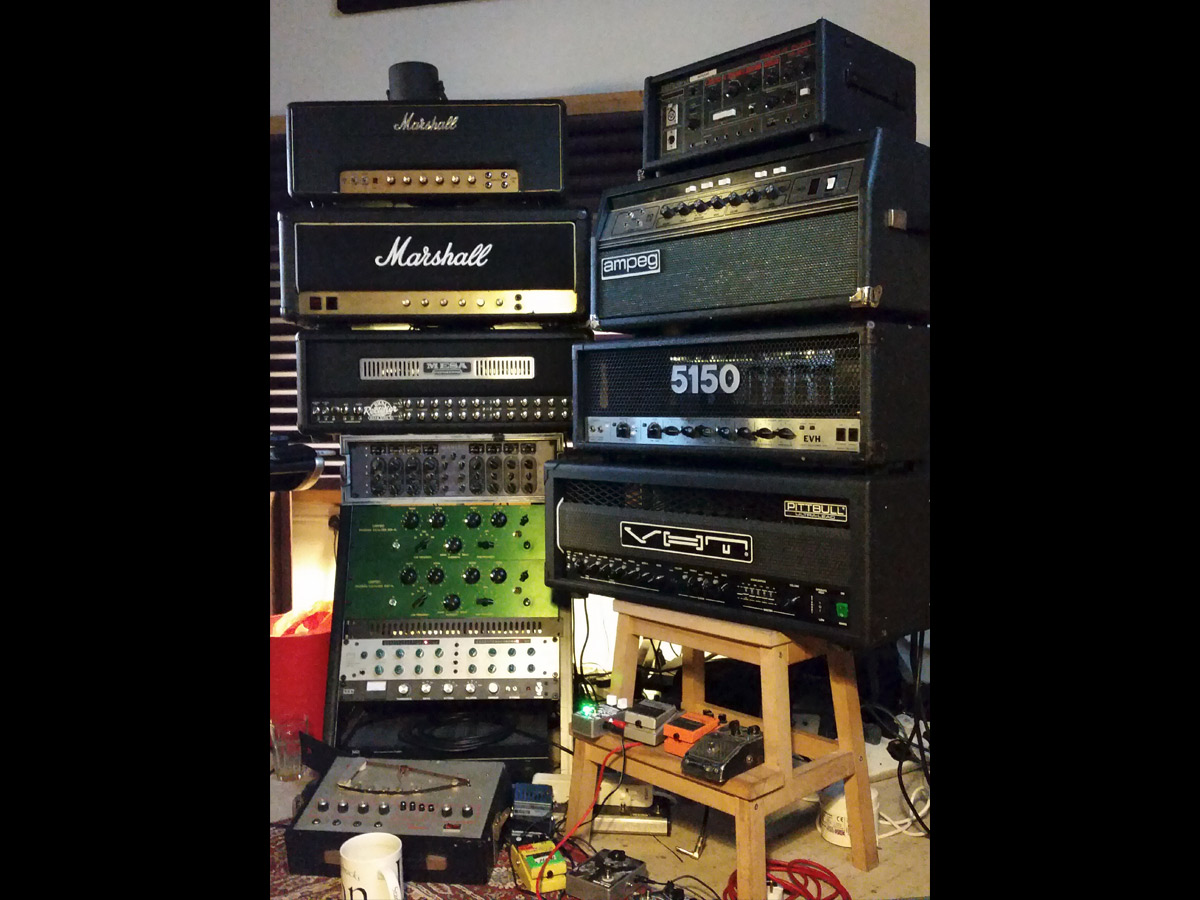
Amps and guitars
How many of those heads pictured in the studio did you bring in yourselves?
"We made a conscious decision six years ago to switch to a seven-string, have a set tuning and transpose everything. Then we could get away with using one guitar and not tune up and down."
“We brought various things down with us but we ended up using pretty much everything Jaime had. Because it was just better stuff. Our gear was a bit too new, that we got from endorsement deals or whatever. The stuff he had he'd collected for years, like a seventies Marshall head, an Orange cab from the sixties… a lot of great stuff that had every different sounds to each other so you could experiment a lot better. Whereas a lot of the heads we brought down tended to have a similar theme, so it wasn't as inspiring in a way.”
What are you using live these days?
“We use various things. For fly-in gigs we're doing what a lot of people do at the moment and taking the Kemper [amp profiler] stuff out. I've been using them for about two years for fly-in gigs, mainly because of freight restrictions and everyone needs to keep the weight down. With the Kempers, when we've been in the studio we've actually profiled the sound that we've had so we can get as near as possible to the studio sound. And it's not bang on, but it's near enough for fly-in gigs to festivals; a couple of days here and there. If we were on a tour bus tour we'd take out more gear but the Kempers offer a very good interpretation of the sound you're going for.”
You've obviously noted the advances in digital modelling over the years since you started with the band, it's quite a significant landmark now that there's an amp profiler to attempt to capture a record's guitar tones…
“It is great, but it does have its slight pitfalls. I don't think any modeller is 100% yet. And it probably will never be because you've got to have the 'movement' of air. And we've had a few crashes with modellers in the past where you're half way through a tour and they just go dead. And that could be because of a software glitch, or because it's been knocked in transit, you don't know. With traditional amps you just change a valve, or you just change a transistor. With these you have to get in touch with their distributor and get one brought to the gig.
"There's good and bad in all those things but they are invaluable for fly-in shows, which a lot of bands have to do these days because there's a lot more festivals."
This is your third record playing seven-string guitars, how have you found the process of transition as a player and writer?
“I just use seven-strings in the studio all the time now, I still have my six-strings and still play them but more often that not I pick up a seven-string these days. It actually came about because we'd had so many tunings during the years, we were having to take out a lot of guitars with us. Or spend time mid set changing tunings. We made a conscious decision six years ago to switch to a seven-string, have a set tuning and transpose everything. Then we could get away with using one guitar and not tune up and down. So that was the initial reason we switched to seven-string, it wasn't to tune anything lower.
"It went from there and we just got used to it. At first you get these bad cramps in your hands but I'm totally used to it now, but I would never go any further with the eight-strings, I don't really see the point of it. Meshuggah do it well, leave it there!”
Did Aaron's Gretsch White Falcon make an appearance on clean parts again for this record?
“No, it didn't actually. We did the rhythms with the Mayones [Regius and Setius] guitars with Bare Knuckles in. Then I used the [Rek] guitar the guy made me with the Seymour Duncan Blackouts in for leads. It was very standard guitar-wise. But I've just signed a deal with Framus so it looks like I might be moving to them."
“I'd had problems with some of my frets in the studio so I was looking around at getting refrets, or something that was more stable. Everything brought me back to the Plek Technology Framus use. I just did a bit of digging and discovered a couple of guys I know were already signed to Framus. So I got a number of a guy who then rang the boss and he said he'd love to work with me. So I'm going to get a few Framus guitars made and hopefully they'll be as good as everyone says they are.”
What kind of designs are you looking at?
“I'm going to try a few different things; I'm going to get a V, an SG-type thing and something that's a little bit like a Les Paul. It's their own shape. I'd like to get back to a V at some point because when I started out gigging with Paradise Lost it was always a V, when I stopped it was around '92 on the second album and I haven't played one since so I wouldn't mind trying it out again. But I remember them being comfortable so we'll see.”

Songwriting
Do you have a tried and tested system in terms of the way you write with Nick now, sending ideas back and forth, or did things change for this album?
“It's easy when you're doing records to become really precious about a piece of music you write, to the point where the song suffers. So we really tried not to be precious about anything."
“It got even better on this one actually. We came up with a system where I'll send him a couple of riffs or whatever, he'll come up with vocal lines over it and I'll ask him to come up with as many as possible in as many styles as he can. So he'll come up with some soft melodies, something in a deeper voice, something death metal, something Hetfieldy. Then he'll send it back to me and I'll strip away everything I did underneath it and build it from there using his vocals. Then I send it back to him and then we'll go to and fro again.
"Sometimes a song can completely change but it's like your inspiration is already there; it's a quicker way of working. And you also know where you are with the song early on; you know what kind of song it's going to be within the first day.
“I really like that way of working and I've told another couple of people about that and they're trying it out. It might not work for other people but I think it's a really interesting way of working because you're bouncing off other people's inspiration straight away.”
Do you think you are now able to work that way because you're so comfortable writing with Nick after all these years?
“Yes, I think so. It's easy when you're doing records to become really precious about a piece of music you write, to the point where the song suffers. So we really tried not to be precious about anything. To go with it and if Nick says, “I really don't like this,' that's fine. Just send me some ideas and I'll strip what I did away, and vice versa. It's about trying to be as open as possible for the benefit of the song.”
As a guitar player, has it actually been beneficial to step away from the guitar and into the vocal frontman role in your other band Vallenfyre? Has it kept things fresh, in a sense?
“It has, that's one way of looking at it. Another way of looking at it is it's made me appreciate vocalists more. Because I used to think they had it so easy. They don't have to carry anything, tune anything… they are kind of the primadonna [laughs]. But I've found every role has its own difficulties and it can be a lot more stressful being the frontman as well. Like losing your voice second day in and you still have to battle through it. It's made me appreciate vocalists lot more.”
And surely you can't drink as much on the road when you're a vocalist either…
“Ha! Well you say that but when I'm playing guitar I don't drink as much as when I'm doing the vocals because I have to think about what I'm playing. But in Vallenfyre, because of the type of music that it is, it's about being as upfront as possible. To do that you usually have a few!”
The Plague Within is released on Monday June 1 through Century Media. Paradise Lost tour the UK and Europe between September and November. For dates visit ParadiseLost.co.uk
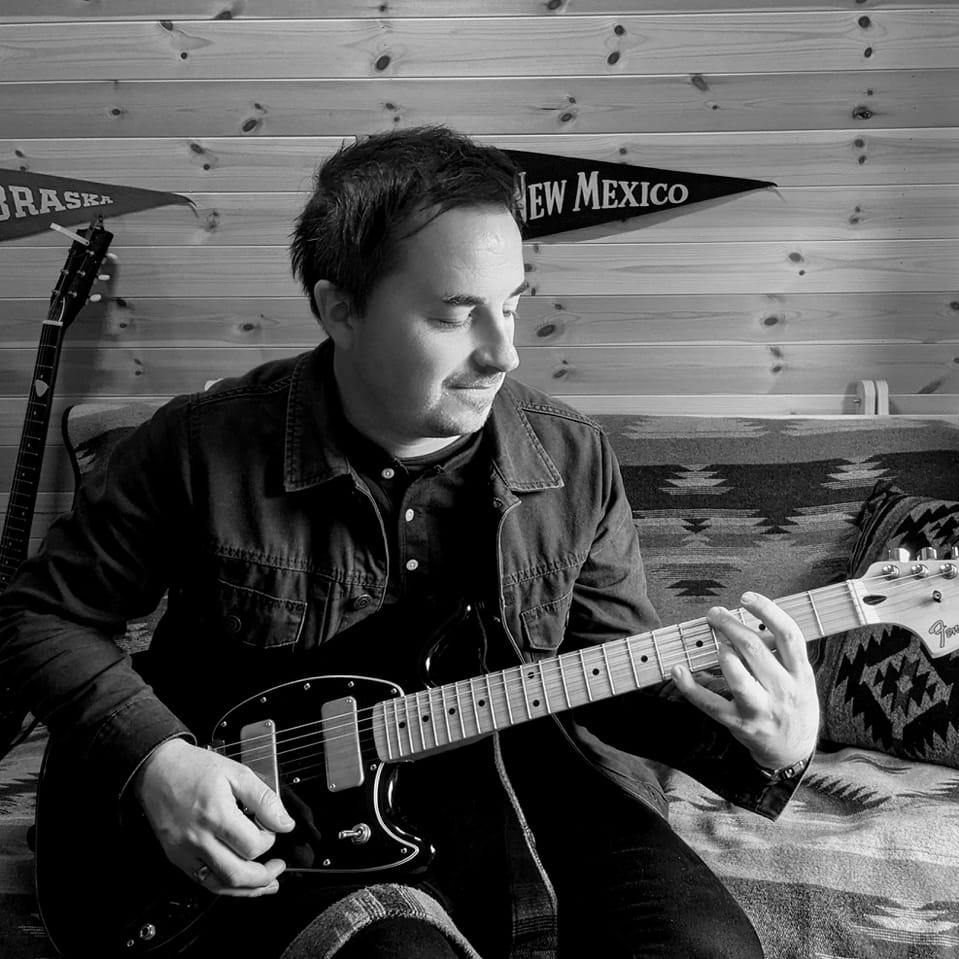
Rob is the Reviews Editor for GuitarWorld.com and MusicRadar guitars, so spends most of his waking hours (and beyond) thinking about and trying the latest gear while making sure our reviews team is giving you thorough and honest tests of it. He's worked for guitar mags and sites as a writer and editor for nearly 20 years but still winces at the thought of restringing anything with a Floyd Rose.

